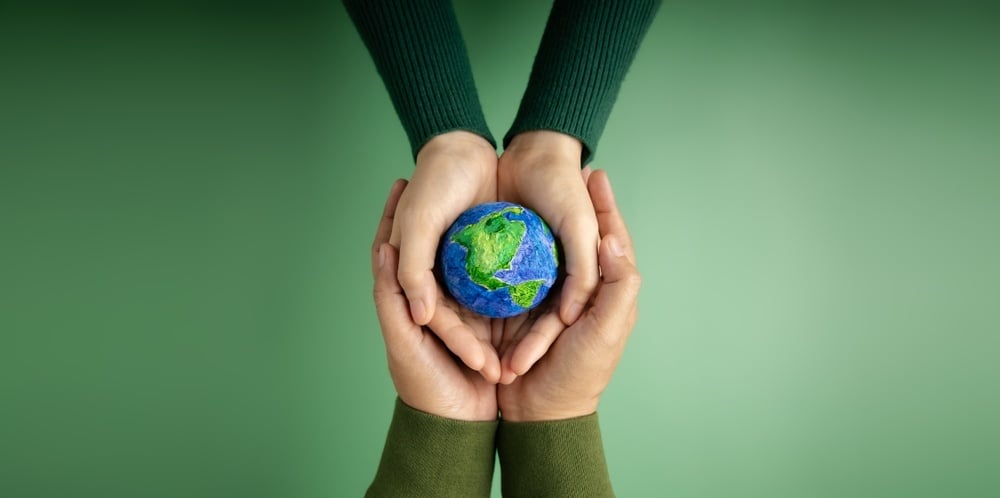Earth Day has become a global phenomenon that unites people across backgrounds and borders in a shared mission to protect our planet. What began as a grassroots movement in the United States has evolved into the largest secular observance in the world, with over a billion participants annually.
How did this remarkable day come to be? How has it evolved? And what is the lasting impact it continues to have on environmental policy and awareness?
Let’s find out!
The Birth of a Movement
Before 1970, environmental protection was barely on the national radar in America. Industrial pollution was rampant, with factories freely releasing toxins into the air and waterways without legal consequences. At the time, the concept of environmental regulations was virtually nonexistent, with no regulatory body overseeing it, no Clean Water Act, and only the nascent stages of The Clean Air Act.
This reality began to shift when Wisconsin Senator Gaylord Nelson witnessed the devastating aftermath of a massive oil spill off the coast of Santa Barbara, California, in January 1969. Deeply troubled by the environmental degradation he observed, Nelson was inspired to take action. Drawing inspiration from the energy and passion of the student anti-war protests sweeping across college campuses, he envisioned a nationwide teach-in focused on environmental issues. Nelson recruited Denis Hayes, a young activist, to organize this ambitious event. Hayes assembled a dedicated national staff of 85 people who worked tirelessly to promote environmental awareness nationwide.
What began as a campus-focused initiative quickly expanded to include a broad coalition of organizations, faith groups, and concerned citizens. The team strategically selected April 22 - a weekday between Spring Break and final exams—to maximize student participation. As the initiative gained momentum, it was rebranded as "Earth Day," a name that immediately captured media attention and public imagination.
The response was overwhelming. On April 22, 1970, an estimated 20 million Americans - roughly 10% of the U.S. population at that time - took to the streets, parks, and auditoriums to demonstrate against environmental degradation.
A Unifying Force
The first Earth Day achieved something remarkable in American politics - it united people across ideological divides. Republicans and Democrats, rich and poor, urban dwellers and farmers, business leaders and labor unions all came together around shared environmental values.
Groups that had been fighting individual battles against oil spills, polluting factories, toxic dumps, pesticides, wilderness loss, and wildlife extinction found common ground in this new movement. This broad coalition demonstrated that environmental protection was not a partisan issue but a human one. The unprecedented public pressure created by Earth Day 1970 would mark a monumental shift, directly leading to swift and substantial political action. By the end of that year, the U.S. Environmental Protection Agency would be established, Congress would pass the National Environmental Education Act, the Occupational Safety and Health Act, and revise the Clean Air Act.
The momentum continued in the following years with the passage of the Clean Water Act in 1972, followed by the Endangered Species Act, the Marine Mammal Protection Act, the Superfund Act, and numerous other landmark environmental laws throughout the decade.
Going Global
For its first two decades, Earth Day remained primarily an American observance. However, as environmental awareness grew worldwide, so did Earth Day's reach. In 1990, Denis Hayes was once again called upon to organize a global campaign for the planet. This time, Earth Day mobilized 200 million people across 141 countries, truly becoming an international phenomenon.
Earth Day 1990 gave tremendous momentum to recycling efforts worldwide and helped pave the way for the 1992 United Nations Earth Summit in Rio de Janeiro - a historic gathering of world leaders focused on environmental challenges.
In recognition of his visionary leadership, President Bill Clinton awarded Senator Nelson the Presidential Medal of Freedom in 1995, the highest honor given to civilians in the United States.
As the new millennium approached, Earth Day 2000 focused on the emerging challenge of global warming and advocated for clean energy solutions. With the help of the internet to connect activists worldwide, this iteration of Earth Day reached hundreds of millions of people across a record 184 countries. Activities ranged from massive rallies in major cities to local initiatives like the talking drum chain that traveled from village to village in Gabon, Africa.
Earth Day in the 21st Century
By 2010, Earth Day had become a global movement with nearly one billion participants. That year marked the 40th anniversary with climate rallies, the launch of the "Billion Acts of Green" initiative, and the Global Day of Conversation, which engaged over 200 elected officials in 39 countries in dialogues about sustainability and reducing carbon footprints.
The significance of Earth Day in international environmental diplomacy was highlighted in 2016 when the United Nations deliberately chose April 22 as the day for world leaders to sign the Paris Climate Agreement. Representatives from 175 nations gathered on Earth Day to sign this historic climate accord, setting a new record for international cooperation on environmental issues.
Earth Day 2020 marked the 50th anniversary of the movement, with the theme "Climate Action." Despite the challenges posed by the COVID-19 pandemic, which forced many planned activities online, over one billion people worldwide participated in what became known as the largest online mass mobilization in history. EARTHDAY.ORG partnered with youth activists to host Earth Day Live, a three-day livestream commemorating the milestone anniversary.
The Impact and Legacy of Earth Day
The legacy of Earth Day extends far beyond a single day of action each year. It has fundamentally changed how we understand our relationship with the natural world and our responsibility to protect it.
The first Earth Day demonstrated that public pressure could lead to meaningful political action on environmental issues, a lesson that continues to inspire environmental activists worldwide. Today, EARTHDAY.ORG works with thousands of partners globally to build upon the foundation laid by Senator Nelson and Denis Hayes. The organization continues to mobilize millions in a united call for the creativity, innovation, ambition, and courage needed to address our climate crisis and create a sustainable future.
Earth Day has evolved from a day of protest to a comprehensive movement encompassing education, advocacy, citizen science, cleanups, and policy change. It reminds us that environmental protection is not just about preserving scenic landscapes but about ensuring clean air, safe drinking water, and a stable climate for all people.
As we face increasingly complex environmental challenges, from climate change to biodiversity loss, the spirit of Earth Day - bringing diverse people together around shared environmental values - remains as relevant as ever. The movement that began with 20 million Americans taking to the streets in 1970 now unites over a billion people worldwide in action for our planet, demonstrating the enduring power of grassroots activism to create meaningful change.
Embrace Sustainability with CERTIFIED
At CERTIFIED, we carry this commitment forward by integrating sustainable solutions into managed waste services. Aligned with Earth Day's values, our operations emphasize the importance of reducing environmental impact, improving recycling initiatives, and promoting responsible waste management for a cleaner and greener future.
We believe businesses and communities are vital in building a sustainable planet. That’s why we partner with organizations to implement eco-conscious waste strategies, paving the way for measurable change. Interested in discovering how CERTIFIED supports your environmental goals?
Reach out to learn more about crafting a sustainable plan tailored to your needs.
.png?width=320&height=80&name=CERTIFIED%20Waste%20Solutions%20Logo%20Vector%20NO%20Tagline%20(4).png)




.jpg)
.jpg)

.jpg)